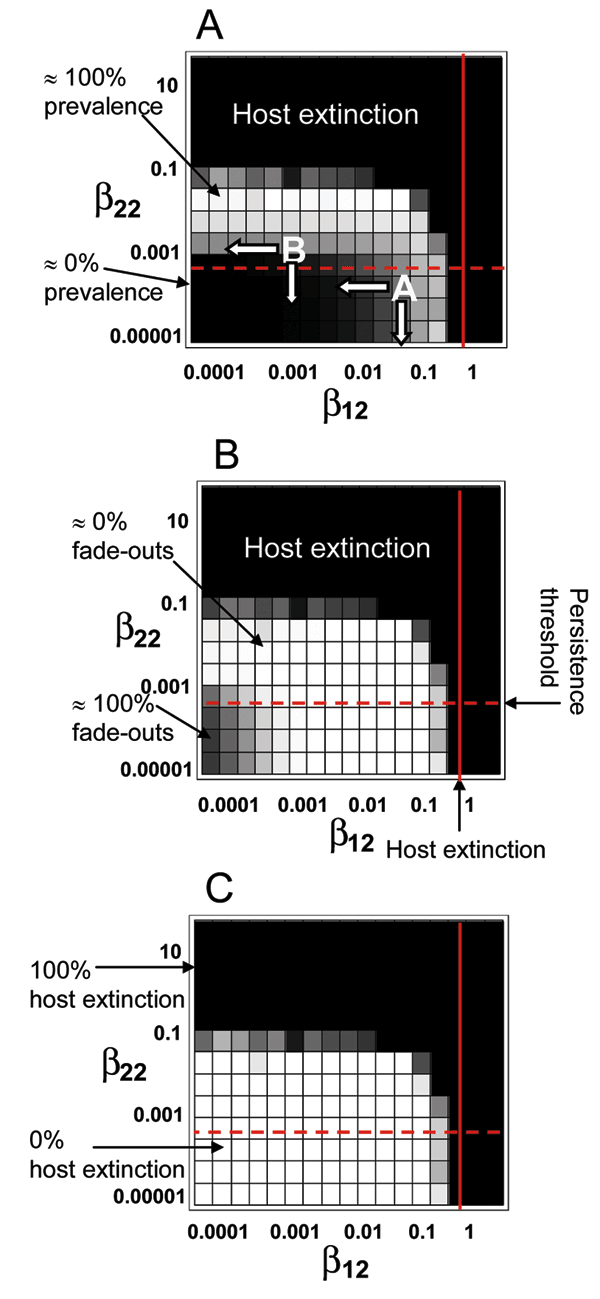Volume 11, Number 12—December 2005
Perspective
Community Epidemiology Framework for Classifying Disease Threats
Figure 3

Figure 3. Stochastic model predictions of system behavior in β12–β22 parameter space. Each square represents the average of 100 simulation runs. Two measures of pathogen persistence are shown: A) Mean prevalence of infection in H2, where black represents zero prevalence and white represents 100% prevalence, and B) Proportion of time in which the pathogen is absent (i.e., has faded out) from H2, where white represents zero fade-outs (i.e., the pathogen is always present in H2) and black represents 100% fade-outs (i.e., the pathogen never infects H2). C) Probability of pathogen-driven host extinction, where black represents the case in which all runs resulted in host extinction and white the case in which none of the runs resulted in host extinction. The horizontal dashed lines are the deterministic approximations of the persistence threshold (given by R0 = 1 when β12 = 0) and the vertical lines are the deterministic approximations of the host extinction threshold. The points marked A and B in panel A and the associated arrows represent different control scenarios for 2-host pathogen systems located at different points within the continuum (see text for details).